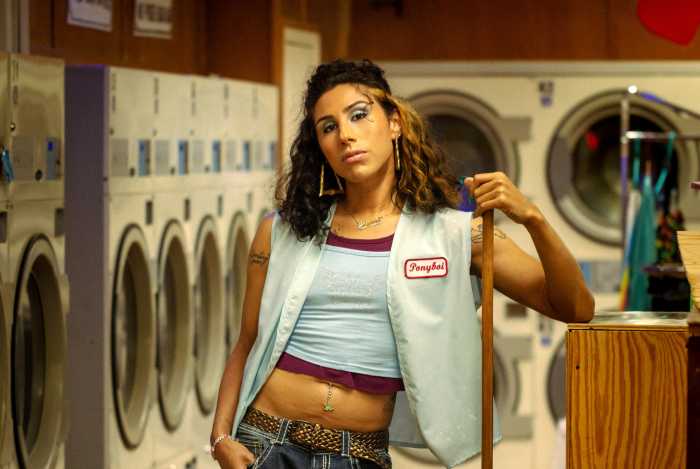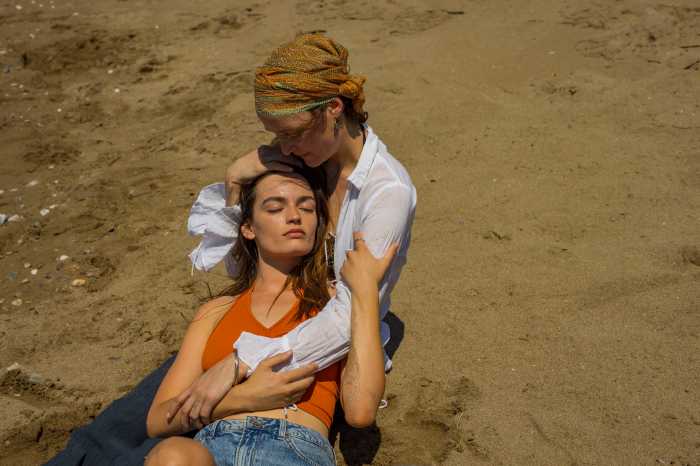Odd trio of Clint Eastwood, Dustin Lance Black, Leonardo DiCaprio tussle over Hoover's legacy
J. Edgar” is the most sympathetic freak show you’re likely to see this year. It’s also contradictory to the point of incoherence.
One suspects that its makers — director Clint Eastwood, openly gay screenwriter Dustin Lance Black, and star Leonardo DiCaprio — have clashing political agendas. Eastwood is a conservative libertarian who opts for dim lighting and slow pacing whenever he wants to convince the spectator he has something profound to say.
The political views of Black, who’s best known for writing “Milk,” are surely more liberal than Eastwood’s.
The same is probably true of DiCaprio, who criticizes J. Edgar Hoover’s attitude toward the civil rights movement in the film’s press kit, although his desire to win an Oscar may motivate his performance in “J. Edgar” more than his politics.
The result is a film that alternates between condemning and romanticizing Hoover.
“J. Edgar” begins in the mid-1970s as the elderly Hoover (DiCaprio) dictates his memoirs to a younger man. He recalls his battles against communist and anarchist radicals in the early 1920s. He then fought against gangsters, all the while glorifying himself and taking credit for actions he didn’t actually accomplish. He gained two important allies, secretary Helen Gandy (Naomi Watts) and assistant Clyde Tolson (Armie Hammer), who also became his lover.
The film recalls Hoover’s activities in the ‘20s and ‘30s in flashback, while much of it is also set in the ‘60s and ‘70s, when the elderly Hoover established a surveillance state and tried to libel Martin Luther King.
Larry Cohen, director of the excellent 1977 B-movie biopic “The Private Files of J. Edgar Hoover,” insists that Hoover was heterosexual. Obviously, Black disagrees. “J. Edgar” depicts Hoover as incredibly awkward around women. His idea of a date is an exercise in library science. When several actresses flirt with Hoover at a restaurant, Eastwood keeps cutting away from the women to Tolson, whose company Hoover obviously prefers.
The film’s depiction of Hoover and Tolson’s relationship is never very explicit — hand-holding and one kiss after a fight is about as hot as it gets — but it’s rather sweet. Eastwood seems to find something redemptive in Hoover’s love for Tolson.
At the same time, he and Black apparently buy into old-fashioned psychoanalytic theories about an absent father and smothering mother causing gayness, since that’s the exact dynamic of Hoover’s family. “J. Edgar” also alludes to the improbable rumors about Hoover’s cross-dressing — after his mother’s death, he tries on her clothes. We’re not far from Norman Bates territory at this point.
Until now, DiCaprio has been an actor with extremely limited range. While he’s 36, he’s rarely been convincing as a man with that much life experience. (Martin Scorsese’s “Shutter Island” has been the sole exception.) There’s something terminally boyish about him. “J. Edgar” does him no favors by burying him in latex makeup for half its running time.
Nevertheless, Eastwood gets DiCaprio to exude an air of masculine authoritarianism I never thought him capable of projecting. It’s impressive work, but the strain is at points palpable. In particular, DiCaprio tries too hard to mimic Hoover’s voice.
Hammer’s far more relaxed performance is equally noteworthy. He suggests a playful, even slightly campy quality to Tolson. Watts is wasted in a mostly decorative part.
“J. Edgar” sees American history through Hoover’s eyes, although it often throws in a word or two from a supporting character to contradict him. At one point, Tolson gives a speech pointing out all the lies and exaggerations in Hoover’s memoir. Hoover’s biography should be enough proof that the man was undeniably evil, yet the film hedges its bets. Compared with the politicians who came after him, Eastwood seems to suggest, Hoover’s racism and lawbreaking were small potatoes.
“J. Edgar” points out the roots of the mentality behind the Patriot Act and the regime of warrantless wiretapping under which we’re currently living. But it also suggests that because Hoover found a love that lasted until the end of his life, there was something positive about him. “J. Edgar” turns liberal bona fides — an affirmative gay love story — to conservative ends. In an odd way, that may be a sign of progress. If the film were made 35 years ago, it would likely have either erased Hoover’s gayness or portrayed it as another addition to his long list of negative qualities.
Essentials:
J. EDGAR
Directed by Clint Eastwood
Warner Bros.
Opens Nov. 9 citywide


































